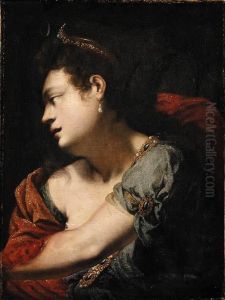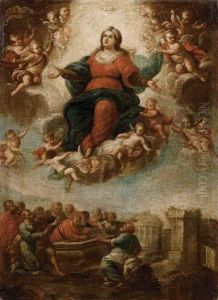Giovanni Carlone Paintings
Giovanni Carlone was an Italian painter of the late Renaissance period, born in 1590 in Genoa. He belonged to the prominent Carlone family of painters and architects, which included his brother Giovanni Battista Carlone and his father Taddeo Carlone, a sculptor and architect of Swiss origin. The Carlone family played a significant role in the artistic scene of Northern Italy, especially in Genoa, during the 16th and 17th centuries.
Giovanni Carlone's career was marked by a style that melded the late Mannerist tradition with the emerging Baroque sensibility. His work was characterized by a dynamic use of color, a sense of movement, and dramatic expressions, features that would come to define the Baroque style. However, details about his life and training are relatively obscure compared to other artists of the period. It is believed that he trained under his older brother, Giovanni Battista, and possibly worked alongside him on various projects.
Carlone's work includes frescoes and altarpieces in churches and palaces throughout Genoa and its surroundings. One of his most notable commissions was for the decoration of the Palazzo Sauli in Genoa. His religious works often featured grand scenes with numerous figures, showcasing his ability to compose complex narratives within his paintings.
Despite his talent, Giovanni Carlone's career was somewhat overshadowed by the success of his brother and other contemporaries. He passed away relatively young, in 1630, and as a result, his body of work is not as extensive as that of some of his peers. Nevertheless, his contributions to the Genoese school of painting are recognized by art historians, and his works are considered important examples of the transition from Renaissance to Baroque art in Italy.

